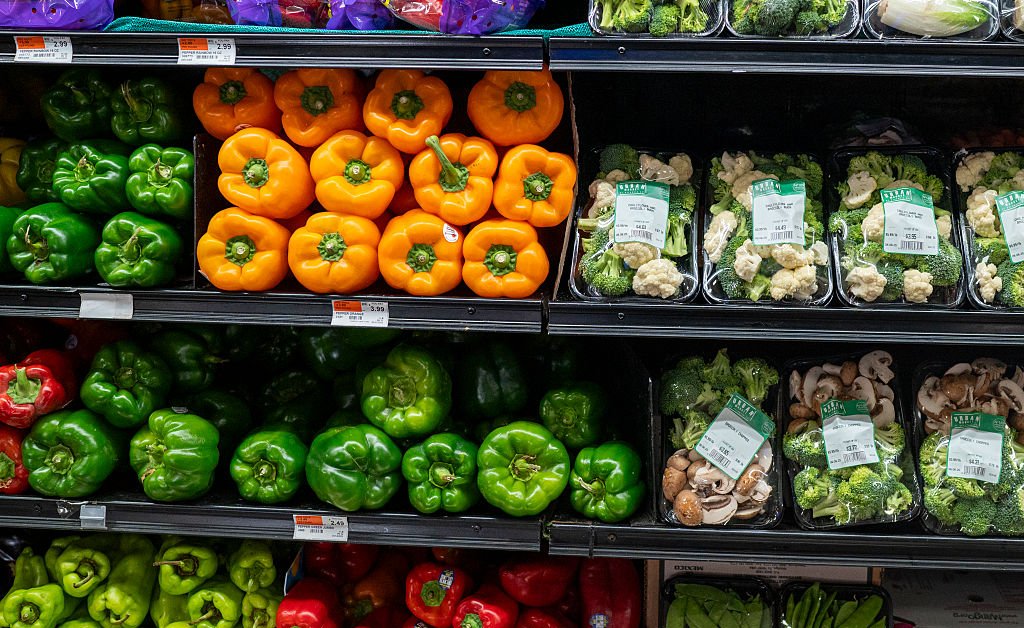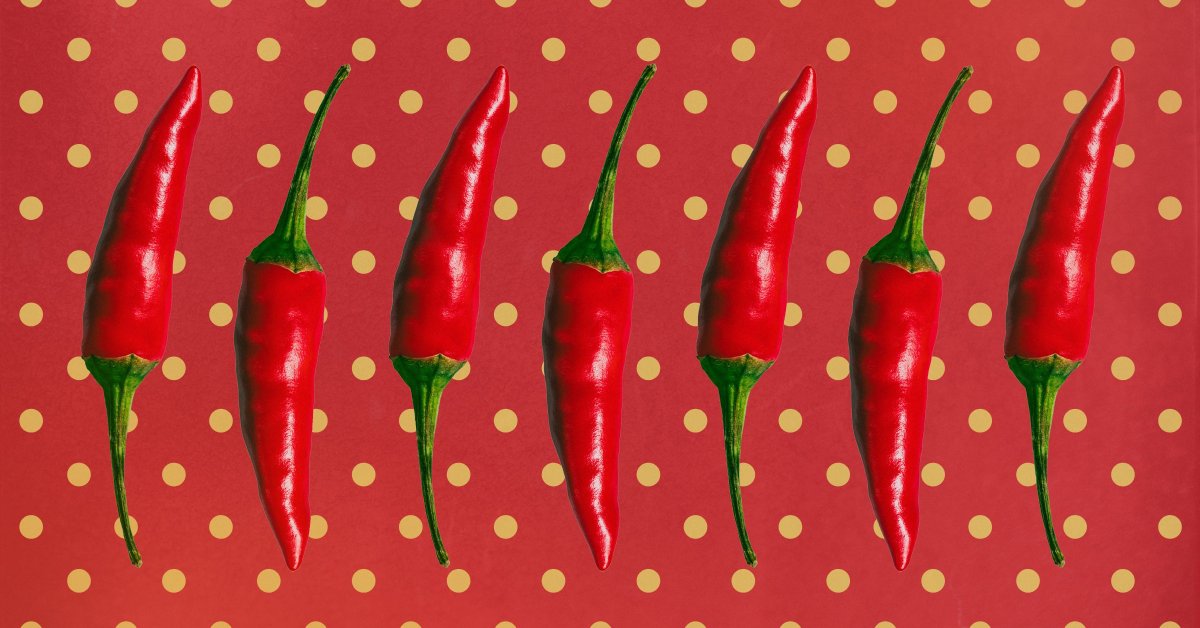There’s a connection between what you are seeing outside your window and what you are seeing in your grocery store, experts say.
Both extreme weather and food costs have been on the rise in recent years. The Consumer Price Index, or CPI, showed, inflation overall rose 2.7% in June from a year earlier, as tomatoes, eggs, and coffee have all seen significant increases. During the same period, the country has battled record heat, hurricanes, and dangerous flooding.
Research suggests it’s more than just coincidence that the price increases and weather extremes are coming together. A report published Monday in the journal Environmental Research Letters shows how extreme weather events is correlated to specific food price spikes in the immediate aftermath.
Food yield being affected by weather is a tale as old as agriculture, but researchers in the study map how climate change has exacerbated extreme weather events, and is directly correlated to specific food price surges. In fact, researchers name food prices as the second-biggest way climate change is currently being felt across the globe, second to only extreme heat itself.
The results of these food price spikes can be devastating, especially for lower-income consumers who spend more of their income on food than the average consumer. Increasing grocery prices have been a major issue on consumers’ minds, and were a significant factor in the 2024 election. Two-thirds of Americans say they are very concerned about these costs, according to an April Pew Research Center survey.
Though experts say there are other compounding factors related to the rising prices, the report notes that unexpected extreme climate conditions and their effects on crop yield cannot be understated.
“The unprecedented nature of many of the climate conditions behind recent food price spikes highlights the ongoing threats to food security as climate change continues to push societies towards ever less familiar climate conditions,” write the researchers, led by Maximilian Kotz, Postdoctoral Research Fellow at the Potsdam Institute for Climate Impact Research. “While the 2023/24 El Ninõ likely played a role in amplifying a number of these extremes, their increased intensity and frequency is in line with the expected and observed effects of climate change.”
Unprecedented weather affects crop yields
The study maps 16 specific extreme weather events since 2022 that have impacted food yields, immediately raising the prices of crops that were not able to be harvested.
In 2022, for example, droughts across California and Arizona contributed to a 80% year-on-year increase in U.S. vegetable prices by the end of the year, the study found—an impact compounded by the fact that California accounts for over 40% of the country’s vegetable production.
Weather extremes outside the country have also affected prices: 2023 droughts in Mexico, it showed, contributed to a 20% price increase in vegetables the following January; droughts in Brazil have raised coffee prices 55% globally; and heatwaves in Japan contributed to a 48% raise in rice prices in the fall of 2024. These heatwaves and droughts were “unprecedented” researchers say, and were felt deeply.

David Ortega, food economist and professor at Michigan State University, says it is important to note that climate change does not just impact weather via heat and drought, though.
“It’s not just drought, it’s floods, it’s hurricanes. It can be even colder temperatures that disrupt crops or freeze and frost that are earlier or later than the normal that affect agricultural production,” Ortega, who is not connected to the study, tells TIME. He points to citrus production in Florida, which was heavily impacted by the major hurricanes that hit the state hard in 2024.
The study specifically cites the United Kingdom as an example, in which “wet winters” contributed to an over 22% increase in potato prices.
“[Price increases are] being felt right away, because food is perishable. You can store some—a lot of the fruits and vegetables in Mexico tend to be frozen—but a lot of stuff is shipped fresh, and the stuff that is shipped fresh is going to be reflected in the price right away,” says Marc Bellemare, professor of economics at the University of Minnesota. “Food markets are reasonably integrated.”
Andrew Hultgren, assistant professor of agricultural and consumer economics at the University of Illinois Urbana-Champaign, says that these extreme weather events particularly impact farmers in “small locations that grow a majority of the world’s supply of some crop,” as the study also notes. He points specifically to the study’s example of Ghana and the Ivory Coast, where 60 percent of the world’s cocoa is produced. The study links “unprecedented” temperatures in the region in February 2024 to an increase in global market prices of cocoa of around 300% by that April.
“Corn has grown all over the world, right? So if you have a bad corn season somewhere … it’ll be smoothed by somewhere else that will probably be having a relatively good season,” Hultgren says. “If most of your production is in one location, you don’t get that spatial smoothing,” he continues, noting the intensity of particular price increases in these instances.
Exacerbating inequalities and inflation
The research also notes that food instability and extreme weather could stoke more political instability and inflation, with the world’s poor bearing most of the economic pain and health impacts.
Bellemare emphasizes that these food price spikes will be felt most by low-income people, who spend a more significant portion of their income on food than the average American.
“The average U.S. household spends about 10% of its budget on food. It is much higher for low income households,” he says. “I worry more about the distributional consequences than I worry about the geographic consequences.”
Hultgren stresses that shifting food prices change the value of the aid low-income Americans receive through programs like SNAP as well.
“That means that the value of food aid, if it’s noted in monetary terms, is fluctuating for you as a family, and that does add unpredictability in the finances of a poor family and that variability can just make decisions on other expenditures more difficult,” he says.
Hultgren also points out that these inequalities will be felt differently in different countries. For those in Europe and America, the price increases will feel like inflation, he says, but they will be “an even bigger problem in developing and poorer parts of the world.”
Experts note that climate change is just one of a confluence of factors that are all coalescing to affect both supply and demand of food products, and leading to rising food prices. Ortega specifically points to 2022, when he says there was “the highest increase in food prices in a generation.” He says that the impact of the war in Ukraine must be noted—but the effect of climate change compounded supply chain disruptions and inflation problems.
The research paper also notes that food price increases are leading to increased headline inflation.
“Central bank mandates for price stability may become increasingly challenging to deliver if more frequent extreme weather events make food prices less stable domestically and in global markets,” the paper observes. “These challenges may be magnified if persistent temperature increases cause a sustained upward pressure on inflation or inflation volatility results in lower credibility and a de-anchoring of inflation expectation.”
Looking at the future
Ortega conducts research on how “shocks,” like the COVID-19 pandemic or Russia’s invasion of Ukraine, affect the agri-food business and impact consumers. Many of these shocks are temporary, Ortega says, though their effects may be intensely felt. The impacts of climate change, however, have only just begun.
“Work like this that shows the impact of climate change on food prices really brings to the surface what I see as one of the significant threats that our food system faces going into the future,” Ortega. “Climate events and adverse weather that are driven by climate change are increasing in frequency, and that’s only going to continue going into the future.”
The researchers note in the study that their work is a “a reminder of the urgency to enact policies that reduce greenhouse gas emissions and limit global warming in line with globally agreed targets.” Further, though, they state that mitigations like early warning systems and “timely information on climate conditions” can help farmers limit their exposure and impact to certain extreme events.
“We’re not unresponsive in the face of climate change,” Bellemare says. “There’s a lot of adaptation going on. There’s insurance products that are being rolled out to those farmers. Everyone’s adapting either in terms of production or in terms of financial instruments to kind of insure themselves or hedge against those things.”
Some of this adaptation can also be done in farmers’ decision-making, Hultgren says, noting farmers can choose to plant more if they know prices are rising, can “think about what the price history has been for the crops that they can plant,” and can consider the forecast for the coming season. But to make those decisions, he says, information must be available and research conducted.
“If we cut information out of the picture, if we don’t provide information about how weather distributions are shifting, how we think they’re going to shift in the future, what they think the seasonal forecast for farmers [is] … that potentially has negative consequences for the ability to for agents to just adapt,” Hultgren says.
Ortega notes that weather can be extremely hard to predict, especially fast-moving weather events like floods or hurricanes. And on that front, Ortega says that the government does not seem to be moving in the direction of progress.
“That’s one area that I’m highly concerned about, given a lot of the funding cuts at the federal level in the United States, at the moment,” he says. “We need to be investing to ensure that we have the best science and technology in order to develop those drought resistant varieties, solvent varieties of crops, and ensure that our producers and producers around the world have the best tools needed in order to mitigate the impacts of climate change on their operations.”








